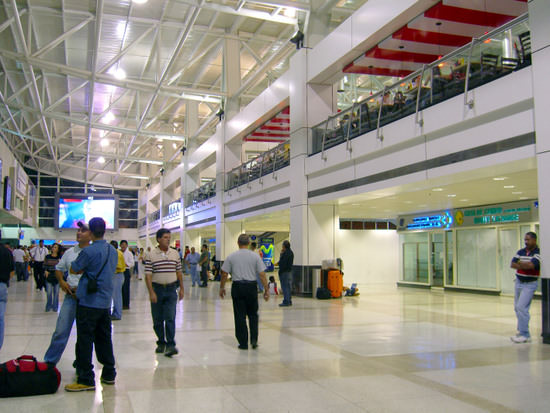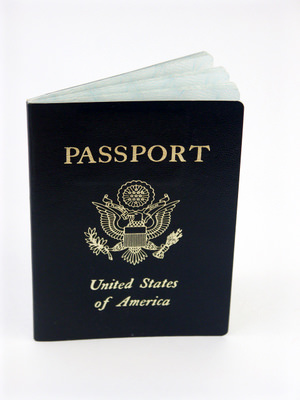This trip planning guide is written for independent vacationers: people who want to travel on their own to a destination and then just soak it up. You may also be interested in The Budget Traveler’s Guide To Planning a Trip to Europe.
In creating your dream vacation, you can certainly rely on the internet to assist in planning your travel and to book hotels, rental cars, and arrange for transfers, etc. In addition, you may want to consult with a travel agent to help in developing an itinerary and booking hotels and essential services.
Guide to Planning a trip to Europe
#1 Choose a Destination
 The first thing to do is to choose a destination. Destinations correspond with more than just sightseeing, and Europe offers almost every option imaginable: beaches, spas, cruises, wine and culinary tours, skiing, golf, hiking, sports events. List your preferred destinations and activity interests by priority to help you make a decision. A destination can be one city or one region. To get inspired, I might peruse the label on a good bottle of wine, find the name of the town in which it was bottled, then see what else the region has to offer. Finding an activity to fit your ideal vacation location is just the beginning of the fun.
The first thing to do is to choose a destination. Destinations correspond with more than just sightseeing, and Europe offers almost every option imaginable: beaches, spas, cruises, wine and culinary tours, skiing, golf, hiking, sports events. List your preferred destinations and activity interests by priority to help you make a decision. A destination can be one city or one region. To get inspired, I might peruse the label on a good bottle of wine, find the name of the town in which it was bottled, then see what else the region has to offer. Finding an activity to fit your ideal vacation location is just the beginning of the fun.
#2 How much time do you have?
Next, you should decide how much time you’d like to spend in Europe.  Just how long can you take lying on a white sand beach? Ok. Bad example. How about… Do you want to remain in the region after the wine tour is complete? Do you want to visit nearby cities? In other words, how long might you extend your stay? In general, few organized activities last longer than a week, which means that you could wrap up your trip in ten days. A one-week culinary tour through Tuscany will give you an in depth look into one famous region of Europe, while a two-week trip to Italy could also allow a few days in Florence, Rome, or Venice.
Just how long can you take lying on a white sand beach? Ok. Bad example. How about… Do you want to remain in the region after the wine tour is complete? Do you want to visit nearby cities? In other words, how long might you extend your stay? In general, few organized activities last longer than a week, which means that you could wrap up your trip in ten days. A one-week culinary tour through Tuscany will give you an in depth look into one famous region of Europe, while a two-week trip to Italy could also allow a few days in Florence, Rome, or Venice.
-Tip: Make sure to pay attention to religious festivals or holidays that might correspond with the dates of your trip. Sometimes an entire country will take a day off!
#3 Choosing how you are going to get around
 Transportation is key. Deciding how you’ll travel is almost as important as deciding where you’ll stay. Train travel in Europe is inexpensive, and even at that, it can be luxurious. It is my favorite way to get around. However, many areas of Europe cannot be accessed by train, which makes renting a car or motorcycle another good option. Some areas that typically cannot be reached by train are remote stretches of coast, national parks, and quaint towns that are off the beaten path. If you choose to rent a car, plan your itinerary in a way that allows you to visit the large cities (Rome, Paris, London, etc.) without a car. Just make sure you know the local traffic rules and driving style. (And, remember that in the
Transportation is key. Deciding how you’ll travel is almost as important as deciding where you’ll stay. Train travel in Europe is inexpensive, and even at that, it can be luxurious. It is my favorite way to get around. However, many areas of Europe cannot be accessed by train, which makes renting a car or motorcycle another good option. Some areas that typically cannot be reached by train are remote stretches of coast, national parks, and quaint towns that are off the beaten path. If you choose to rent a car, plan your itinerary in a way that allows you to visit the large cities (Rome, Paris, London, etc.) without a car. Just make sure you know the local traffic rules and driving style. (And, remember that in the  UK, they drive on the left side of the road.)
UK, they drive on the left side of the road.)
-Tip: If renting a car, significant discounts are offered for long-term rentals. Significant charges are added if returning the rental to a different location than it is picked up.
-Tip: If you plan to travel by train, find the official web site of the government-run train system for the country in which you will be traveling. Here are a few examples: Italy , France, Germany , and England.
#4 Book those Flights!
 Now that you’ve organized an itinerary, it’s time to establish the facts. Search for the best flights while searching for the best hotels in the corresponding city or cities. If you’re part of a tour, does it provide accommodations or transportation?
Now that you’ve organized an itinerary, it’s time to establish the facts. Search for the best flights while searching for the best hotels in the corresponding city or cities. If you’re part of a tour, does it provide accommodations or transportation?
-Tip: The busiest time of year in Europe is July and August, and flight prices reflect this. Try traveling April-June or September-October. I remember one restaurant owner telling me that everyone would disappear exactly on August 27th. He was right: When the date rolled around the train stations were quiet and the beaches vacant.
#5 What to pack
 Because deciding what to pack can be stressful—no one wants to forget something super important—here’s a list of the most important things: passport, seasonal clothing, toiletries, cash, ATM card, credit cards, a corkscrew, a good guidebook, and good walking shoes. If you plan on taking electronic devices, make sure to bring a European outlet plug adapter. Other important items are books, a computer, a small camera (as well as an extra memory cards or else an upload cable), and flip-flops.
Because deciding what to pack can be stressful—no one wants to forget something super important—here’s a list of the most important things: passport, seasonal clothing, toiletries, cash, ATM card, credit cards, a corkscrew, a good guidebook, and good walking shoes. If you plan on taking electronic devices, make sure to bring a European outlet plug adapter. Other important items are books, a computer, a small camera (as well as an extra memory cards or else an upload cable), and flip-flops.
-Tip: Many hotels have book swaps that allow you to trade your old book for a new one free of charge. Here’s where to find more complete packing tips articles
#6 Money matters
Money is the universal language that all travelers and business owners speak world round: Make sure you have access to it. Contact your bank and your credit card companies and tell  them the dates on which you’ll be traveling and which countries you will visit. The financial companies might otherwise assume that your card has been stolen and deactivate it. Make sure you have the international toll free number written on the back of your cards in case of emergency. Always keep a few American dollars in your luggage just in case.
them the dates on which you’ll be traveling and which countries you will visit. The financial companies might otherwise assume that your card has been stolen and deactivate it. Make sure you have the international toll free number written on the back of your cards in case of emergency. Always keep a few American dollars in your luggage just in case.
-Tip: Credit card companies usually give you the best exchange rates. However, most credit card companies add a surcharge for purchases made abroad. Getting a card that doesn’t, such as Capital One, is worth it.
-Tip: Not all banks charge you for using ATMs outside of the country, Wells Fargo for one.
#7 The Language barrier ( It’s not so bad)
 The language barrier can be a daunting prospect, but it doesn’t have to be. Just like in Manhattan, locals around the world are happy to help a friendly traveler catch a train. Just remember the “friendly” part. If you plan to stick to one country, invest in a phrase book. Trying to speak the native language is always appreciated, even if it ends in complete failure. You will find that in a big city, there are lots of people who speak English. In smaller towns it is more difficult, but you can be sure that the tourist office has someone who can help.
The language barrier can be a daunting prospect, but it doesn’t have to be. Just like in Manhattan, locals around the world are happy to help a friendly traveler catch a train. Just remember the “friendly” part. If you plan to stick to one country, invest in a phrase book. Trying to speak the native language is always appreciated, even if it ends in complete failure. You will find that in a big city, there are lots of people who speak English. In smaller towns it is more difficult, but you can be sure that the tourist office has someone who can help.
#8 Passports and Visas
 Visas and vaccinations are not required in most European countries or the Schengen Area as long as you are visiting for less than three months. Turkey is one notorious exception to the rule: it requires that you buy a visa before entering the country, or else at the moment you arrive in the country. For this latter option, only Turkish currency is accepted, not credit cards, travelers checks, etc. Double-check the facts for each country you plan on visiting before you go. Our country guides give you complete tourist information for most countries in Europe.
Visas and vaccinations are not required in most European countries or the Schengen Area as long as you are visiting for less than three months. Turkey is one notorious exception to the rule: it requires that you buy a visa before entering the country, or else at the moment you arrive in the country. For this latter option, only Turkish currency is accepted, not credit cards, travelers checks, etc. Double-check the facts for each country you plan on visiting before you go. Our country guides give you complete tourist information for most countries in Europe.
#9 If you’ve covered all these bases, then it’s time to relax and take in a whole new world of experience!
Written by Mattie Bamman for EuropeUpClose.com

bueler
Monday 14th of May 2012
I took the bullet train from London to Paris. It was the first time on a bullet train for me.....great way to travel...under the channel.
Mark Schaaf
Saturday 12th of March 2011
just a couple things i would like to mention about money. Many US banks have what they call travel cards which is like a gift card in the sense that it is prepaid which is a good option and some people get one just in case their wallet is stolen. Another thing is most European banks don't give you the ATM option screen we get in the US where you can choose if you want your money to come out of your checking or savings most of them only let you take from your checking making it important to put your vacation money it that account in order to get to your money. Lastly either make a photo copy or write down the number of all the cards in your wallet whether it be a credit card or medical card and put the phone number next to it and keep it in your carry on bag, this will make thing much easier to take care of if you lose your wallet or it is stolen.
Ryan
Wednesday 9th of February 2011
Super Guide! I am planning a trip this summer and this will really help me a lot.
By the way, this is the first time I will be out of my country. ;)
Sarah Worsham
Monday 31st of January 2011
Great list! I'd recommend keeping in mind that #2 and #3 are closely tied together. If you only have a week in Germany, for example, you may want to look at scheduling trips on the ICE (high speed) trains so you can quickly get between cities. Or if you only have a week, but you want to travel by car, you'll want to visit areas where driving a car makes sense (Bavarian Alps, for example). Also, ask other travelers for tips on what you should see or can see during the time that you have.